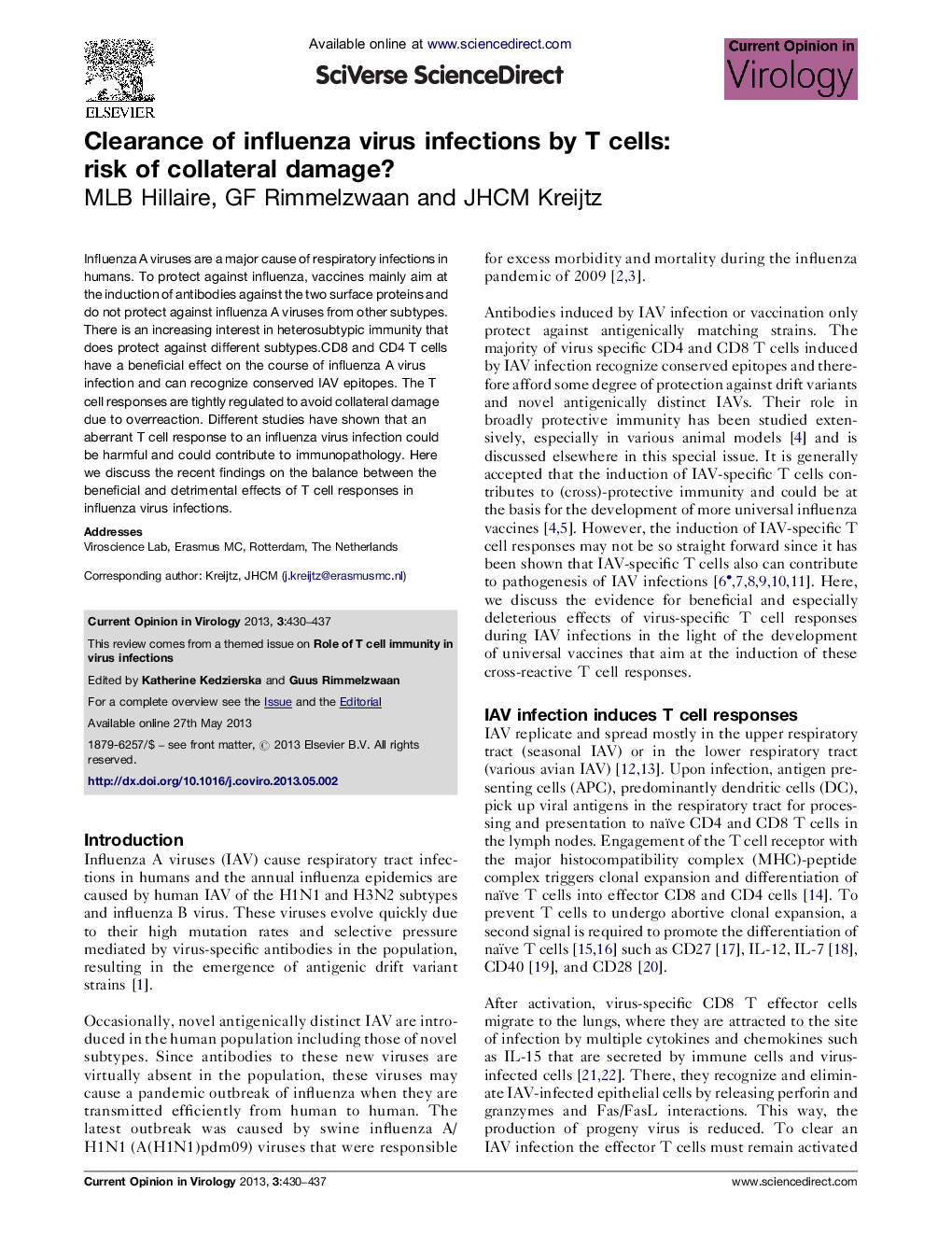| Article ID | Journal | Published Year | Pages | File Type |
|---|---|---|---|---|
| 5806864 | Current Opinion in Virology | 2013 | 8 Pages |
â¢CD4 and CD8 T cells are important for clearance of influenza virus infection.â¢Seasonal influenza A virus-specific T cells can cross-react with other influenza A viruses.â¢The activity of virus-specific T cells is tightly regulated by different regulatory mechanisms.â¢An aberrant T cell response might induce lung damage.â¢Universal vaccines should aim not only at the induction of CD8 T cells but also CD4 T cells.
Influenza A viruses are a major cause of respiratory infections in humans. To protect against influenza, vaccines mainly aim at the induction of antibodies against the two surface proteins and do not protect against influenza A viruses from other subtypes. There is an increasing interest in heterosubtypic immunity that does protect against different subtypes.CD8 and CD4 T cells have a beneficial effect on the course of influenza A virus infection and can recognize conserved IAV epitopes. The T cell responses are tightly regulated to avoid collateral damage due to overreaction. Different studies have shown that an aberrant T cell response to an influenza virus infection could be harmful and could contribute to immunopathology. Here we discuss the recent findings on the balance between the beneficial and detrimental effects of T cell responses in influenza virus infections.
